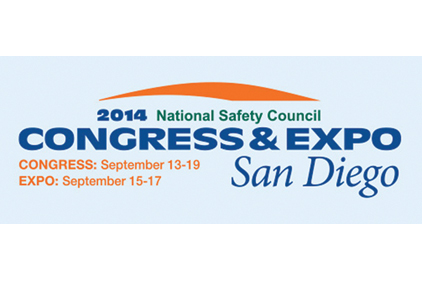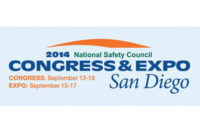What are the top ten leadership mistakes you’ve seen in your experience?
1. Arrogance
2. Distraction
3. Disconnection
4. Complacency
5. Command-and-pretend
6. Tunnel vision
7. Getting in own way
8. Not using leverage
9. Not reinforcing effectively
10. No juice
Why are these mistakes made again and again?
Great question. Because not everyone’s the same, there are likely a wide range of reasons.
Some leaders have a blind spot to what they’re doing and are therefore prone to repeating the same mistakes (“It couldn’t have been me, it was bad luck/others/circumstances”, etc.).
Some conflate what they think of as their good intent with ineffective actions (“All I was trying to do was make sure others came home from work the same way they came in.”)
Others narrowly focus on the perception that, in the past, their actions have achieved some results (and don’t see they’ve reached the point of diminishing returns or that they are singing an old song that they’ve “killed” due to overuse and no one is listening.)
Many had poor leadership role models themselves – or have been led to believe that being a “strong” leader means being unyielding, forceful, pushing their ways onto others or going it alone.
Yet others might be stubborn, insisting on doing things “their way.”
There are some that, though they might not admit it, act as if they are more interested in controlling others or being “in charge” than in actually heightening safety, culture, or productivity.
Others don’t look for or see the results of their actions so don’t receive – or want to get - the feedback things are not really as they idealize (either because they’ve distanced themselves from those who react to them, are too busy doing too many other things, surround themselves with “yes” people, etc.)
Or, perhaps most insidious, some leaders get “decent”/“OK” results which they allow to get in the way of seeing where they could be self-sabotaging potential excellent outcomes; that self-satisfaction leads to their missing opportunities to become even better.
Persisting in defaulting toward making some of the worst of these top ten leadership mistakes can actually keep a leader stuck in his/her self-made ruts (for example, if they are too arrogant to ever question themselves, they’ll likely become complacent and disconnected from others.)
How can busy leaders best avoid these mistakes given their time restraints?
The first step (as in any improvement process) is to dispassionately note that they are making these mistakes. As a wise person said, “When the same things keep happening to you, it’s time to put aside your searchlight and pull out a mirror.” They can seek out honest and courageous feedback on their actions (“Do I ever do any of these ‘mistakes’?”) from others they trust; not being satisfied with just being reflexively reassured.
Second is to self-monitor specifically where and how they make these mistakes, watching to not reflexively fall into these same-old dysfunctional actions (for example, losing patience with a particular person to the extent they “command and pretend.”)
Third entails replacing the “mistake” with a simple, more effective leadership action.
Fourth is go back to first step, get external feedback to see if, indeed, the leader is moving in a better direction and to reinforce the improvement.
While these may seem like a lot, this approach is doable, doesn’t have to take a lot of time or energy -- and can reap significant results.
Positive change is intrinsic to leadership. When leaders ask/expect others to change, they can best lead the way themselves by exemplifying open-mindedness, receptivity and improvement. The right action is more critical than just inspirational (or kick-ass) words.
How best can employees give feedback to their leaders about their mistakes?
Carefully, of course.
And timing is everything. First off, always make sure leaders are ready; offer and wait until they request feedback. (“If you’re ever interested, I may have some ideas that might improve what we’re doing here.”) The employee might begin building a bridge by offering “thanks” and sincere complimentary feedback, rather than starting off with criticism. Remember that the best feedback is “helpful” and “useful,” rather than “positive” or “negative” -- best when it’s not personal and more geared towards recalibrating/improving performance rather than either buttering up or blasting.
Before offering feedback, the givers should honestly assess their own motives (“Am I mostly wanting to vent my frustrations?”; “Is this basically an opportunity for me to get on his good side?”). It sometimes works best when an employee suggests that she is willing to provide overall feedback on others’ reactions (keeping the feedback general to be sure not to “rat out” anyone by, without naming specific names.)
It’s not a coincidence that typically those that need course correction the most are also most resistant or defensive. The best feedback-givers are courageous; I know it’s easy to write or talk about this but not as easy to do, especially with a “difficult” leader who has a strong say in your ongoing livelihood. Because of this, rather than giving feedback “up,” it’s much easier for peers to offer feedback, or to provide this as a group (e.g. safety committee), or to do this anonymously. Or call in a skilled outside resource who can tactfully and dispassionately provide honest alternatives to current plateaued or stymied leadership approaches.
Robert Pater,rpater@movesmart.com, is managing director of Strategic Safety Associates and has worked with senior leaders in larger companies worldwide to move toward global class safety leadership and safety culture. He is the creator of the MoveSMART® system for significantly reducing strains and sprains, hand injuries, and slips/trips/falls, implemented in more than 60 countries. Clients have included: ADT, Airgas, Alaska Tanker Company, American Airlines, Amtrak, BHP Billiton, BP, Domtar, DuPont, Honda, Marathon Oil, Michelin, MSC Industrial Supply, Nissan, Portland General Electric, Pitney Bowes, Pratt & Whitney, Textron, United Airlines, URS, U.S. Steel and many others in more than 60 countries.

